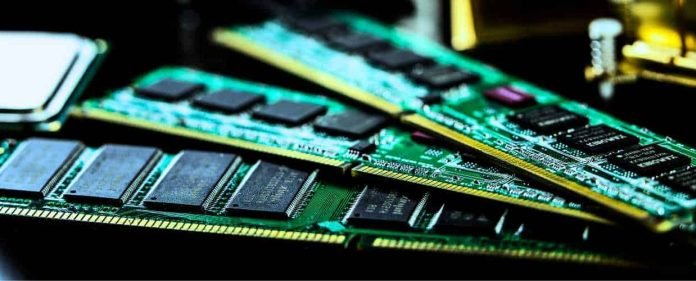One of the most crucial components when maximizing your computer’s performance is your system’s RAM (Random Access Memory). RAM is vital in determining how quickly your computer can access and manipulate data, affecting everything from multitasking to gaming and content creation. In this guide, we’ll explore the key factors to consider when selecting the perfect RAM for your computer.
Understand RAM Basics
Before diving into the specifics, grasping some fundamental concepts about perfect RAM is essential.
Capacity
RAM is measured in gigabytes (GB) and dictates how much data your computer can store for immediate access. The more RAM you have, the more applications and data your system can handle simultaneously. Having ample RAM prevents slowdowns when multitasking or using memory-intensive software.
Speed (Frequency)
RAM speed is measured in megahertz (MHz) and determines how quickly data can be read from or written to the RAM. Higher frequency RAM generally performs better, especially in extensive data sets tasks. Faster RAM is particularly beneficial for gaming, video editing, and 3D rendering tasks.
Latency (CAS Latency)
Latency is the time delay between a command sent to the RAM and the RAM responding. Lower latency values are better, as they indicate quicker response times. Lower CAS latency enhances real-time responsiveness and can make a difference in scenarios where fast data retrieval is crucial, such as gaming.
Consider Your Computer’s Usage
The amount of RAM you need depends on your computer usage.
Casual Use
8GB to 16GB of RAM is usually sufficient for web browsing, word processing, and basic tasks. This amount of RAM allows smooth multitasking and ensures your computer can handle everyday activities comfortably.
Gaming
Gamers benefit from 16GB to 32GB of RAM, especially when playing modern games that demand substantial memory resources. Games with high-quality textures, open-world environments, and complex simulations benefit from more RAM for seamless gameplay.
Content Creation and Productivity
Video editing, 3D modeling, and other resource-intensive tasks benefit from 32GB or more RAM. These tasks involve manipulating large files and rendering complex scenes, which can quickly exhaust RAM resources.
Match RAM to Your System
Ensure that the RAM you choose is compatible with your computer’s specifications.
Motherboard Compatibility
Check your motherboard’s specifications to determine the type of RAM it supports (e.g., DDR4, DDR3), maximum capacity, and maximum speed. Using incompatible RAM can lead to system instability or failure to boot.
Operating System
Different operating systems have varying RAM requirements. Windows 10, for example, functions well with 8GB to 16GB of RAM for most users. If running resource-intensive applications or virtual machines, consider opting for more RAM.
Optimize Speed and Latency
Balancing RAM speed and latency is essential for optimal performance. Choose RAM with a speed that matches your motherboard’s capabilities. Faster RAM can provide a performance boost, but the gains may be significantly marginal if other components limit overall performance. Balancing RAM speed with other components like the CPU and GPU is crucial for maximizing performance.
Lower CAS latency values are preferable, as they indicate quicker response times. However, real-world performance differences can be subtle, so focus on balancing latency with other factors. Optimal performance relies on a combination of speed, latency, and capacity.
Brand and Reliability
Selecting reputable RAM brands ensures quality and reliability.
Trusted Manufacturers
Stick with well-known manufacturers like Corsair, Kingston, G.SKILL, and Crucial. These brands often provide better warranty and customer support. Quality RAM from trusted manufacturers reduces the risk of compatibility issues and ensures a more stable computing experience.
User Reviews
Reading user reviews and checking customer feedback can provide insights into a particular RAM module’s performance, compatibility, and reliability. Real-world experiences shared by users can help you make an informed decision based on other people’s experiences.
Future-Proofing and Budget Considerations
Consider your computer’s future needs, and RAM prices can vary significantly based on capacity and speed.
Future Upgrades
Select RAM that allows for future expansion. Opt for larger-capacity modules or leave available RAM slots for easy upgrades. It ensures you can adapt to increasing memory demands without replacing your existing RAM entirely.
Dual Channel vs. Single Channel
If your motherboard supports dual-channel memory, pairing RAM modules (e.g., 2x8GB) can provide a slight performance boost compared to a single module. Dual-channel memory configuration enhances data transfer rates and can lead to improved overall performance.
Value vs. Performance
While faster RAM can offer improved performance, it often comes at a higher cost. Consider a balance between your budget and the performance gains you’ll experience. Opt for RAM that meets your performance needs without stretching your budget.
Conclusion
Selecting the perfect RAM for your computer involves assessing your usage patterns, understanding RAM specifications, ensuring compatibility, and considering factors like speed, latency, and future needs. By balancing capacity, speed, and price, you can make an informed decision that optimizes your computer’s performance for your specific tasks. Whether you’re a casual user, gamer, or content creator, a well-chosen RAM configuration can contribute significantly to an efficient and enjoyable computing experience.



